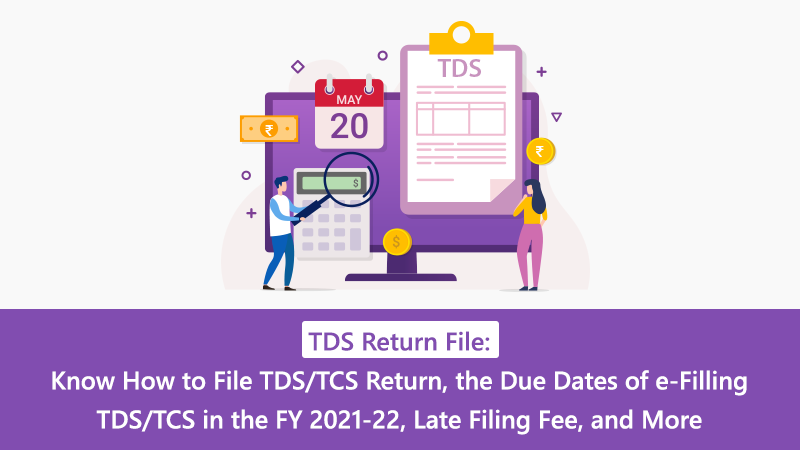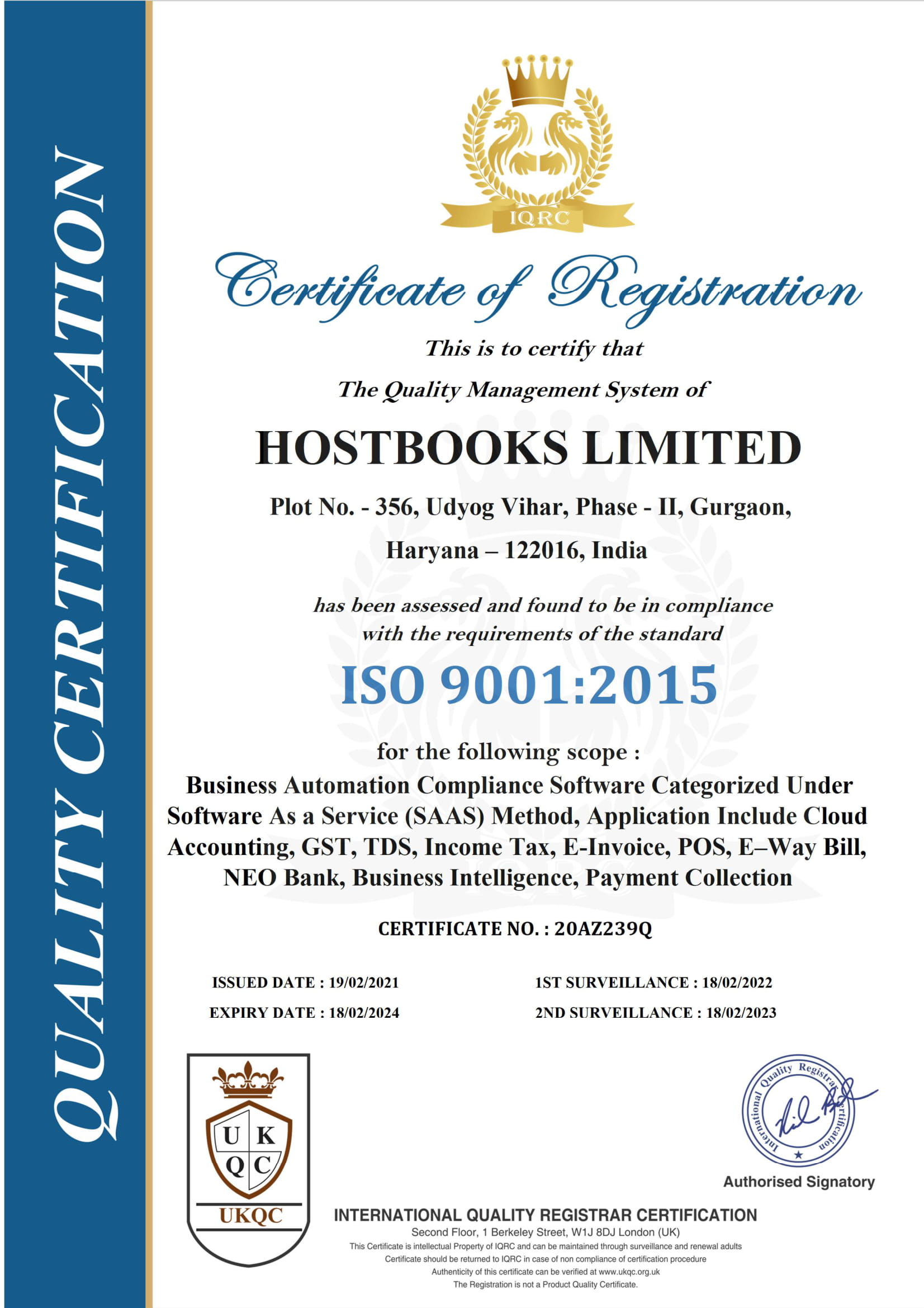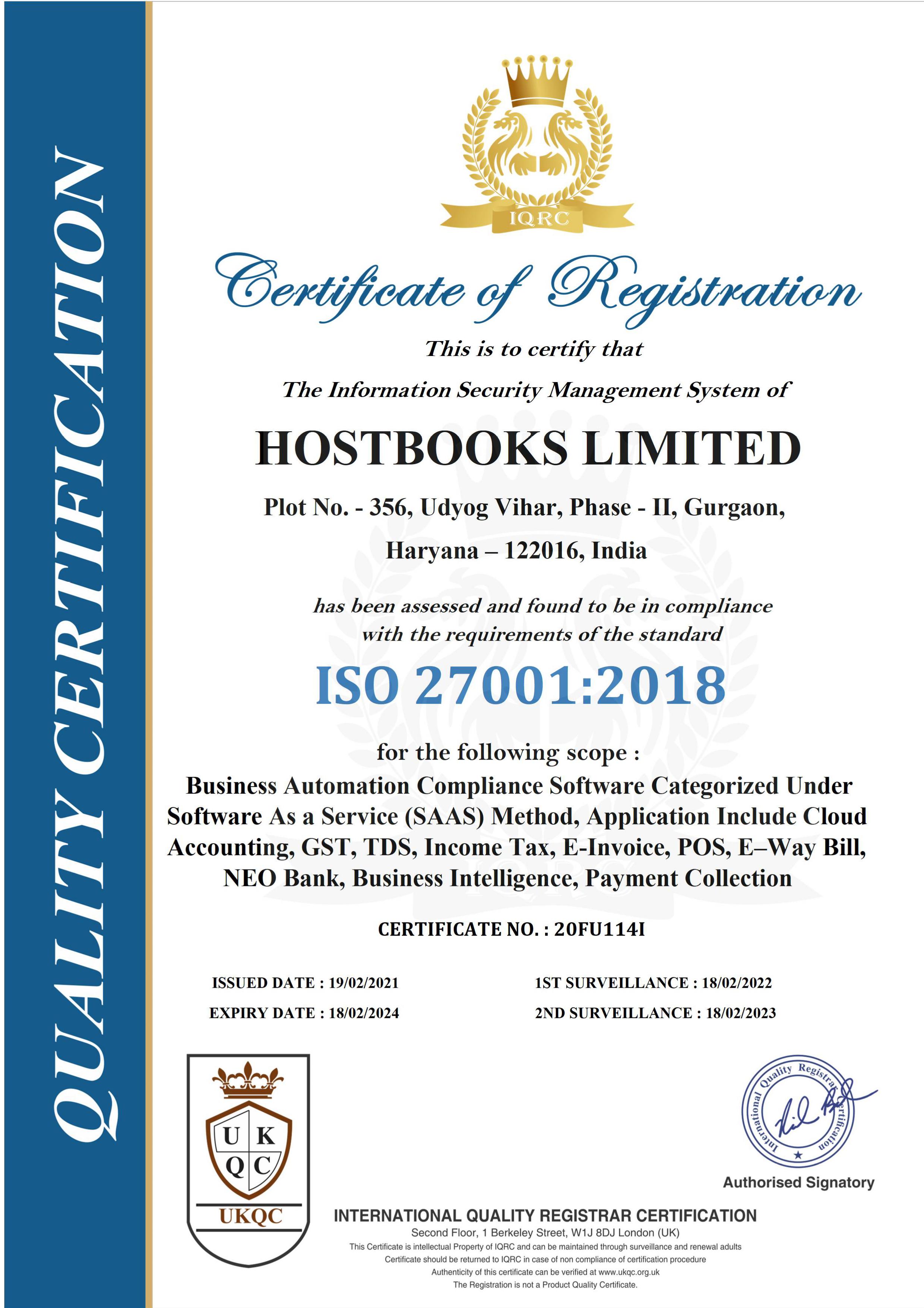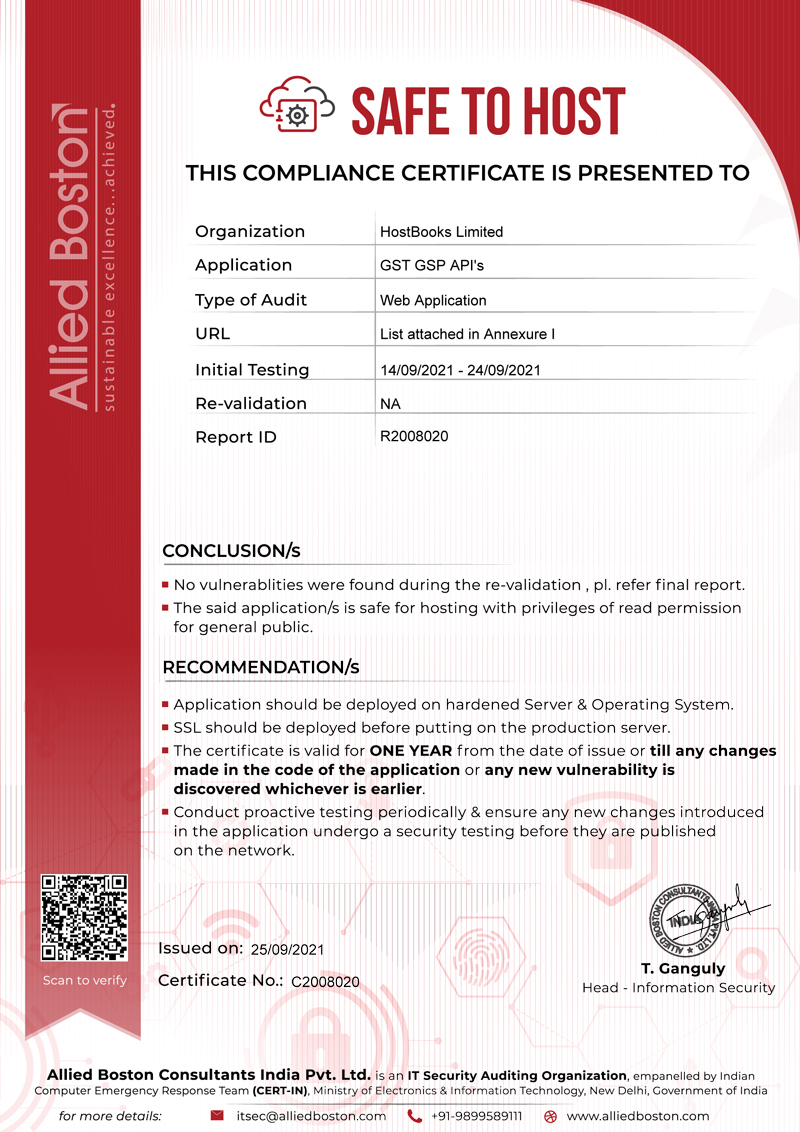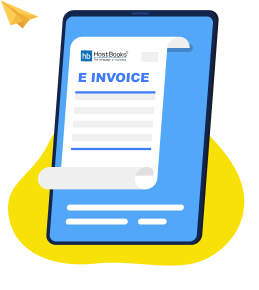
5 Reasons TDS Software is Profitable for Your Business World
October 18, 2022TDS Entry in Tally with GST [Payable and Receivable] 2024 Quick Guide
September 15, 2023Tax Deducted at Source (TDS) is a crucial component of the Indian taxation system, aimed at collecting taxes at the source of income. Once you deduct the TDS it is important to deposit the TDS amount to the government on behalf of the taxpayer. Depositing the TDS could be complex, and a single error might cause extra trouble or even penalties.
In this comprehensive guide, we will take you through every aspect of TDS Online Payment and Challan 281 online payment. We will discuss in detail every term related to TDS deposit, how TDS payment options have changed over, and things to consider while making the payment. Finally, we will also provide you with accounting entry that you should pass after paying TDS.
If you have basic clarity on what is TDS, Challan and how TDS amount is calculated you can jump into the method.
Let’s understand a few terms that you should know.
What is TDS – Tax Deducted at Source?
TDS, or Tax Deducted at Source, is a system introduced by the Indian government to collect taxes at the source of income. It is applicable to various types of payments such as salary, interest, rent, professional fees, commission, etc.
Under this system, the person responsible for making the payment deducts a certain percentage of the amount as tax before making the payment to the recipient. The deducted tax is then deposited with the government.
This blog is written from the perspective of the Deductor (Entity making the payment). For example, assume you are the company who has deducted TDS of your employees. Now you need to deposit the deducted amount with the government.
What is Challan 281- TDS Deposit Form?
In general, the term “challan” refers to an official form or receipt that serves as an acknowledgement or proof of a transaction, violation, or payment.
In Taxation context, Challan is the form through which tax, or any payment is deposited to the government. It could be self-assessment tax, advance tax, TDS, TCS, late fees, penalty or any other kind of remittance that needs to be made to the government.
It contains details like the taxpayer, tax amount, type of tax, nature of payment, mode of payment, bank/branch name, assessment year and most important Challan Identification Number (CIN) and BSR (Basic Statistical Return) that identifies the challan.
Challan 281 is a specific form that is to be filled in and deposited for the purpose of depositing TDS and TCS to the government’s account. It contains additional details like nature of deduction and TAN number of the deductee.
What is ITNS 281- (Income Tax New Series)?
Previously, Challan 281 used to be in physical copy which needed to be filled by taxpayer and submit the physical copy along with the amount in the bank account.
However, since the introduction of E-payment of TDS, Challan 281 is referred to as ITNS 281. ITNS stands for Income Tax New Series. It’s just the new name for online payment of TDS and TCS.
What is TAN- Tax Deduction and Collection Account Number?
TAN stands for Tax Deduction and Collection Account Number. It is a unique alphanumeric code assigned to entities or individuals who are responsible for deducting or collecting tax on behalf of the government. TAN serves as an identifier for tax deducted at source (TDS) or tax collected at source (TCS) transactions.
It’s like PAN number allotted to taxpayers.
What is TDS Return?
TDS Return refers to the periodic submission of details related to Tax Deducted at Source (TDS) by individuals or entities who are responsible for deducting TDS.
The primary purpose of filing a TDS Return is to provide information to the tax authorities about the deductions made on various payments, such as salaries, interest, rent, commission, etc.
It includes details such PAN (Permanent Account Number), details of deductees (including PAN and TDS amount), nature of payment, amounts paid or credited, tax deducted, CIN/BSR number through which TDS is deposited.
Process of TDS Deduction and Deposit

The process of TDS deduction and deposition involves several steps. However, the first step is ensuring that you need to deduct TDS on payment and obtaining a TAN number. Here’s a breakdown of the process after you have a TAN Number/.
- Determine the applicable TDS rate: For each type of payment subject to TDS, identify the correct TDS rate specified by the Income Tax Department. Rates may vary based on the nature of payment, payee category, and other criteria of TDS Rate Chart.
- Calculate the TDS amount: Based on the applicable TDS rate and the amount being paid, calculate the TDS amount to be deducted. Ensure accurate calculation to avoid any discrepancies.
- Deduct TDS: Deduct the calculated TDS amount from the payment to the payee at the time of credit or payment, whichever is earlier. Ensure that the deduction is made in accordance with the applicable TDS rate.
- Issue TDS certificate: Provide a TDS certificate to the payee, such as Form 16 for salaries or Form 16A for non-salary payments. These certificates contain details of the TDS deducted and serve as proof for the payee while filing their income tax returns.
- Deposit TDS: Deposit the deducted TDS amount with the government within the specified time frame. Include accurate details like TAN, assessment year, type of payment, and TDS amount while filling the Challan.
- File TDS returns: File TDS returns on a quarterly basis using Form 24Q, 26Q, 27Q, or 27EQ, depending on the type of deductee and nature of payment. Provide details of TDS deductions made during the quarter, including PANs of deductees, Challan Number /BSR though which TDS is deposited and TDS amount.
Calculation of TDS Amount to Be Deposited

Here are the steps to calculate the total amount of TDS that should be deposited by the due date.
- Collect all the TDS deduction details of the month.
- Sum up the total TDS amount deducted during that period.
- Ensure that the TDS deduction is done as per the applicable rates and provisions of the Income Tax Act.
- Verify that the TDS deducted is compliant with the thresholds and limits specified for different types of payments.
- Cross-check the accuracy of TDS deductions and ensure that all additional dues are considered, interest, penalty, and Fees (if any).
- Prepare the consolidated TDS deposit amount by summing up the total TDS deducted during the period.
Example
Assume that a company deducts the following amount of TDS
| Date | Recipient | TDS Deducted |
|---|---|---|
| June 5th | Vendor A | 3000 |
| June 10th | Vendor B | 5000 |
| June 15th | Vendor C | 10000 |
| June 30th | Employee A | 1500 |
| June 30th | Employee B | 2500 |
| June 30th | Employee C | 3000 |
| TOTAL | 25000 |
How to pay TDS online? Step By Step
There are multiple ways for online payment of TDS, and we will discuss each of them one by one.
Online Modes
- Without Logging in the e-filing Portal:
- After Logging in e-filing portal
Offline mode
- By visiting Bank
Online Method 1: Without Logging in the e-filing Portal
This method is suitable when you don’t need to access additional features of the e-filing portal and prefer a quick and straightforward TDS payment process. This is to be used when you don’t have access to the e-filing portal, or you don’t want to go through the login process.
Here are the steps for Online payment of TDS
Step 1: Open your web browser and visit the following link:
https://eportal.incometax.gov.in/iec/foservices/#/e-pay-tax-prelogin/user-details
Note: Previously the e-TDS deposit link used to be https://onlineservices.tin.egov-nsdl.com/etaxnew/tdsnontds.jsp. But now would be facilated through new income tax portal mentioned above.
Step 2: Enter your TAN (Tax Deduction and Collection Account Number), and confirm it by entering it again.
Step 3: Provide your mobile number and click on the “Continue” button.
Step 4: Enter the OTP (One-Time Password) received on your mobile device and click on “Continue.”
Step 5: Verify the displayed TAN and Name associated with it. If they are correct, proceed by clicking on “Continue.”
Step 6: Select the relevant Assessment Year, such as AY 2023-24.
Step 7: Under the “Pay TDS” option, click on “Proceed.”
Step 8: Choose the appropriate section from the available options, for example, “Commission or brokerage – Sec 194H,” and click on “Continue.”
Step 9: Select the applicable “Tax Applicable (Major Head)” based on the deductees’ status, either non-corporates (0021) or corporates (0020).
Step 10: Navigate through the pages until you find the desired section.
Step 11: Enter the TDS payable amounts for the relevant heads, including tax, surcharge, cess, interest, penalty, and Fee u/s 234E.
Step 12: Select the desired “Type of Payment” (Net Banking / Debit Card / RTGS / Pay at Bank), and click on “Continue.”
Step 13: Choose your preferred Bank Name from the provided options and click on “Continue” to preview the payment.
Step 14: Verify all the details in the preview and click on “Pay and Submit to the Bank.”
Step 15: Access your Bank’s Net Banking Site using the provided user ID and password and enter the payment details on the bank’s website.
Step 16: Upon successful payment, a challan (counterfoil) will be displayed, showing the CIN (Challan Identification Number), payment details, and the bank name used for the e-payment. Keep this challan as proof of payment.
Step 17: Download the challan and make sure to share a copy. You can also download the challan from the Payment History section of the ITD Portal for your reference.
Note: Only these bank support Online TDS Payment method – UCO Bank, State Bank of India, South Indian Bank, RBL Bank, Punjab National Bank, Punjab & Sind Bank, Kotak Mahindra Bank, Karur Vysya Bank, Jammu & Kashmir Bank, IndusInd Bank, Indian Overseas Bank, Indian Bank, IDBI Bank, ICICI Bank, HDFC Bank, Federal Bank, DCB Bank, City Union Bank, Central Bank of India, Canara Bank, Bank of Maharashtra, Bank of India, Bank of Baroda, Axis Bank.
Offline Method 2: After Logging in e-filing portal (Recommended)
This method is suitable when you want to access additional features of the e-filing portal or have multiple TDS transactions to manage.
Follow the steps for offline TDS payment
Step 1: Open the following link: Log in to Online Tax Payment using https://www.incometax.gov.in/iec/foportal with your TAN and Password.
Step 2: After logging in, go to the ‘e-File’ menu and click on ‘e-Pay Tax’.
Step 3: On the right-hand side, click on ‘New Payment’ to access the ‘New Payment’ page.
Step 4: Select the relevant Assessment Year, such as AY 2023-24.
Step 5: Proceed by clicking on ‘Pay TDS’ under the ‘Pay’ option.
Step 6: Choose the applicable section from the provided options, for example, ‘Commission or brokerage – Sec 194H,’ and click on ‘Continue’.
Step 7: Select the ‘Tax Applicable (Major Head)’ based on whether the deductees are non-corporates (0021) or corporates (0020).
Note: There may be multiple pages in this section. Browse through the pages to find the specific section you require.
Step 8: Enter the TDS payable amounts for the relevant heads, including tax, surcharge, cess, interest, penalty, and Fee u/s 234E.
Step 9: Select the ‘Type of Payment’ (Net Banking / Debit Card / RTGS / Pay at Bank) and click on ‘Continue’.
Step 10: Choose the Bank Name you want to use and click on ‘Continue’ to preview and proceed with the payment.
Step 11: Verify all the details in the preview and click on ‘Pay and Submit to the Bank’.
Step 12: Login to your Bank’s Net Banking Site using the provided user ID and password for net-banking purposes and enter the payment details on the bank’s site.
Step 13: Upon successful payment, a challan (counterfoil) will be displayed, containing the CIN (Challan Identification Number), payment details, and the bank name used for the e-payment. Keep this challan as proof of payment.
Step 14: Download the challan and make sure to share a copy of it. You can also download the challan from the Payment History section of the ITD Portal for your records.
By logging into the e-filing portal, you can access various features, such as viewing TDS statements, generating challans, and tracking payment status. It provides a centralized platform for managing all TDS-related activities and offers enhanced functionality and control.
Offline Method: Paying though the bank branch
This method is old as it requires you to visit branch and manually filling
Step 1: Print Challan 281: Click on the link to download the Challan 281 Form and get it printed
Step 2: Prepare the required data: Gather all the necessary details and information required to fill out Challan 281 accurately. Make sure you have all the relevant information at hand before proceeding to the bank branch for payment.
Step 3: Visit the bank branch: Take the prepared Challan 281 and visit your nearest bank branch. Submit the challan along with the TDS payment amount.
Step 4: Keep the Challan Receipt: Once the payment is made, the bank will provide you with a Challan Counterfoil. Keep this receipt safe as it contains crucial information that will be needed when completing your TDS Return.
FAQs about TDS Online Payment
Q1 How can I pay TDS without login?
You can pay TDS without logging into the e-filing portal by visiting new income tax portal Tax Payment page. Select the relevant TDS challan, fill in the required details, and complete the payment using online modes like net banking or debit card.
Q2 Can I pay TDS by myself?
Yes, as a taxpayer, you can pay TDS by yourself. You can visit the designated websites or bank portals, follow the instructions, and make the TDS payment using online payment modes.
Q3 How to pay TDS online 2023?
To pay TDS online in 2023, you can visit the income tax website, login to the portal, select the relevant TDS challan, fill in the necessary details, choose the payment mode, and complete the payment process as per the instructions provided.
Q4 Is TDS paid monthly?
TDS is not necessarily paid monthly. The deduction and payment of TDS depend on the nature of the transaction and the applicable provisions of the Income Tax Act. TDS may be deducted and paid monthly, however it could be required to pay TDS on the same day of deduction as well.
Q5 How do I pay TDS income tax?
To pay TDS on income tax, you can follow you can login to your Income Tax e-filing portal.Just select the appropriate TDS challan, enter the required details, choose the payment mode, and complete the payment process.
Q6 From which banks can I pay TDS?
Online TDS payment can be made from following authorized banks: UCO Bank, State Bank of India, South Indian Bank, RBL Bank, Punjab National Bank, Punjab & Sind Bank, Kotak Mahindra Bank, Karur Vysya Bank, Jammu & Kashmir Bank, IndusInd Bank, Indian Overseas Bank, Indian Bank, IDBI Bank, ICICI Bank, HDFC Bank, Federal Bank, DCB Bank, City Union Bank, Central Bank of India, Canara Bank, Bank of Maharashtra, Bank of India, Bank of Baroda, Axis Bank.
Q7 Is TDS refundable?
Yes, if the TDS deducted is more than the actual tax liability, it can result in a refund. The taxpayer can claim the refund while filing their income tax return, and the excess TDS amount will be refunded by the tax authorities after processing the return.
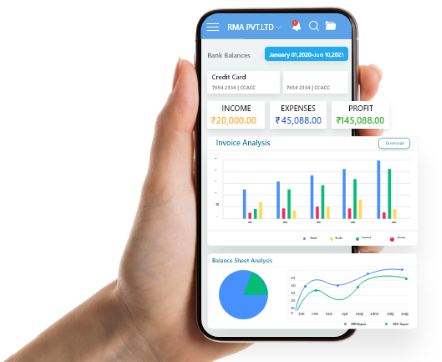
Try HostBooks
SuperApp Today
Create a free account to get access and start
creating something amazing right now!







